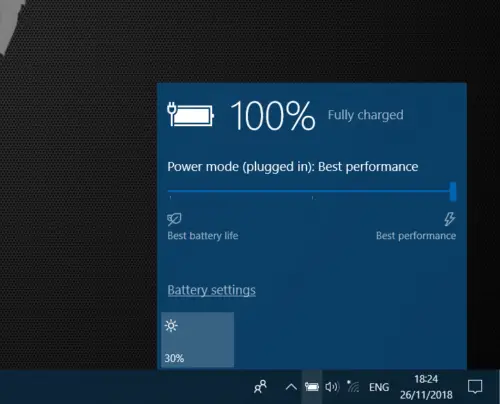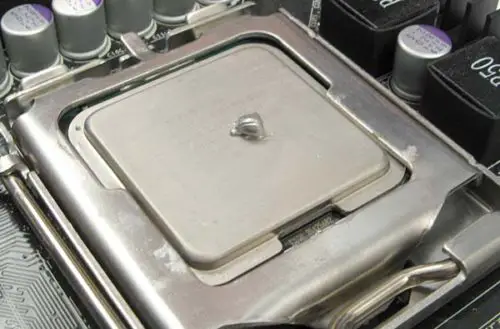CPU throttling or dynamic voltage frequency scaling is when the performance and power of the CPU is reduced due to high temperatures.
It also occurs when your CPU is idle or not performing demanding tasks.
For example, by reducing the power of the CPU on a laptop. Battery power is consumed at a slower rate. Since running at maximum performance will deplete battery power very quickly.
Throttling also happens as a safety mechanism when the laptop or PC runs the risk of being overheated or its cooling system is not good enough to dissipate heat quickly enough.
Here’s everything you need to know on how to fix CPU throttling and the 5 best solutions on how to fix CPU throttling.
Why is My CPU Throttling?
When a laptop is under heavy usage or playing very demanding games the system becomes hot.
Too much heat can destroy the internal components of the gaming laptop and so as a safety mechanism.
The performance of the CPU drops or shuts down to prevent the system from getting destroyed by the heat.
You will notice that the laptop becomes slower or framerates drops when playing games. Thermal throttling can happen to both CPU and GPU.
5 Best Solutions on How To Stop CPU From Throttling
Since heat is the main cause of the thermal throttling. There are a 5 best solutions to prevent CPU throttling.
The ideal CPU temperature is 60 degrees. Temperatures higher than 85 degrees will run the risk of your gaming laptop having a thermal throttling.
The max CPU temperature you should allow is 85 degrees.
- Make sure your gaming laptop doesn’t have dust in the vents or inside it. They can block air flow and clog the vents causing the CPU to overheat.
- Reduce the setting and resolutions during gameplay. This will prevent the laptop from operating at maximum performance causing it to overheat.
- Invest in a cooling fan.
- Undervolting or underclocking your CPU greatly reduces the chances of CPU throttling.
- Applying Thermal Paste to better control high temperatures.
How To Fix CPU Throttling? [6 In-depth Solutions]
Thermal throttling falls under CPU throttling but only occurs when the system is working at high temperatures.
CPU throttling can occur even if there is no overheating.
For example, using the gaming laptop on power-saving mode can easily cause the CPU to throttle in order to save battery power. Here are a few ways to prevent your CPU from throttling.
Keep Your Power Mode On Best Performance

Power mode should be kept on best performance this will prevent the CPU from throttling even when not plugged in.
Disable Power Throttling through Registry.
a. Hit Windows key + R to open RUN
b. Type regedit and hit enter to open Registry
c. Follow this path:
HKEY_LOCAL_MACHINE\SYSTEM\CurrentControlSet\Control\Power

d. Right-click Power folder, select New, and click on Key.
e. Name the key PowerThrottling and press Enter.

f. Right Click the PowerThrottling you created, and select DWORD (32-bit) Value.

g. Name the DWORD (32-bit) Value you created, PowerThrottlingOff and hit OK.

h. Right-click the newly created DWORD and select modify, set the value from 0 to 1. Select OK. As shown below.

By Changing Settings In The Power Plan

a. Press Windows + X and select “Power Options”.

b. Choose Additional Power Settings under Related Settings.

c. Click Change Plan Settings under Selected Plan.

d. Choose Advanced Power Settings.

e. Go to Processor Power Management and expand it.

f. Expand Minimum Processor State and change On Battery and Plugged in to 100%.

g. Do the same for Maximum Processor State. Select Apply and OK.
Apply Thermal Paste

The application of thermal paste can help solve your CPU throttling problems. Your thermals are in contact with your CPU.
But, there is a problem. Most times, there is a microscopic gap of air between the thermals and CPU.
Air is a bad conductor of heat and so heat does get transferred quickly leading to high temperatures.
Applying thermal paste closes this gap and improves thermal conductivity. They are particularly useful in overclocking your CPU.
Underclocking And Undervolting Your CPU or GPU
This is the best thing you can do if you want to prevent high temperatures and thermal throttling.
Underclocking is basically reducing the clock speeds that your CPU operates at. Whiles undervolting is reducing the amount of voltage used by them.
- Pros and Cons of Overclocking CPU or GPU
- How to Monitor CPU and GPU temperature Windows 10? [5 Methods]
Both underclocking and underclocking lead to less power consumption. Means you get lower temperatures and much more stable performance.
Proper undervolting and underclocking are perfectly safe. Because you reduce the power consumption which causes less heat to be produced.
And the less heat produced the lower the chances of thermal throttling occurring.
Disable CPU Throttling in BIOS
CPU throttling can’t be disabled in the BIOS. Because the BIOS is not user friendly-configurable. Other options are to undervolt, apply thermal paste, and disable power throttling through the registry.
Is CPU Throttling Bad?
No, CPU throttling is a safety mechanism that prevents your CPU from destroying itself.
If it doesn’t reduce the performance, the CPU will run at very high temperatures which will cause it to crash or set on fire.
How Can I Tell if My CPU is Throttling?
When you experience sharp drops in performance when gaming or running demanding applications that cause high temperatures. That’s when your PC is thermal throttling.
If your temperatures are not high and there sharp drops in performance. Your PC is CPU throttling.
Alternatively, you can run software that monitors the performance of your CPU and GPU. For example, MSI Afterburner shows a graph that monitors the CPU and GPU performance over time.
When there is a sharp drop in performance at a given that, it’s thermal throttling.
Final Thoughts
Every laptop is concerned about CPU throttling. And when high temperatures are involved your laptop tends to thermal throttle. This negatively impacts the performance of the laptop and your experience using it.
Fortunately, by following the solutions we provided. You can prevent CPU throttling.

I needed to thank you for this fantastic read!! I definitely loved every bit of it. I have got you book marked to look at new things you post…|
With help of you i finally able to fix CPU Throttling, Thanks Dude, keep it up.